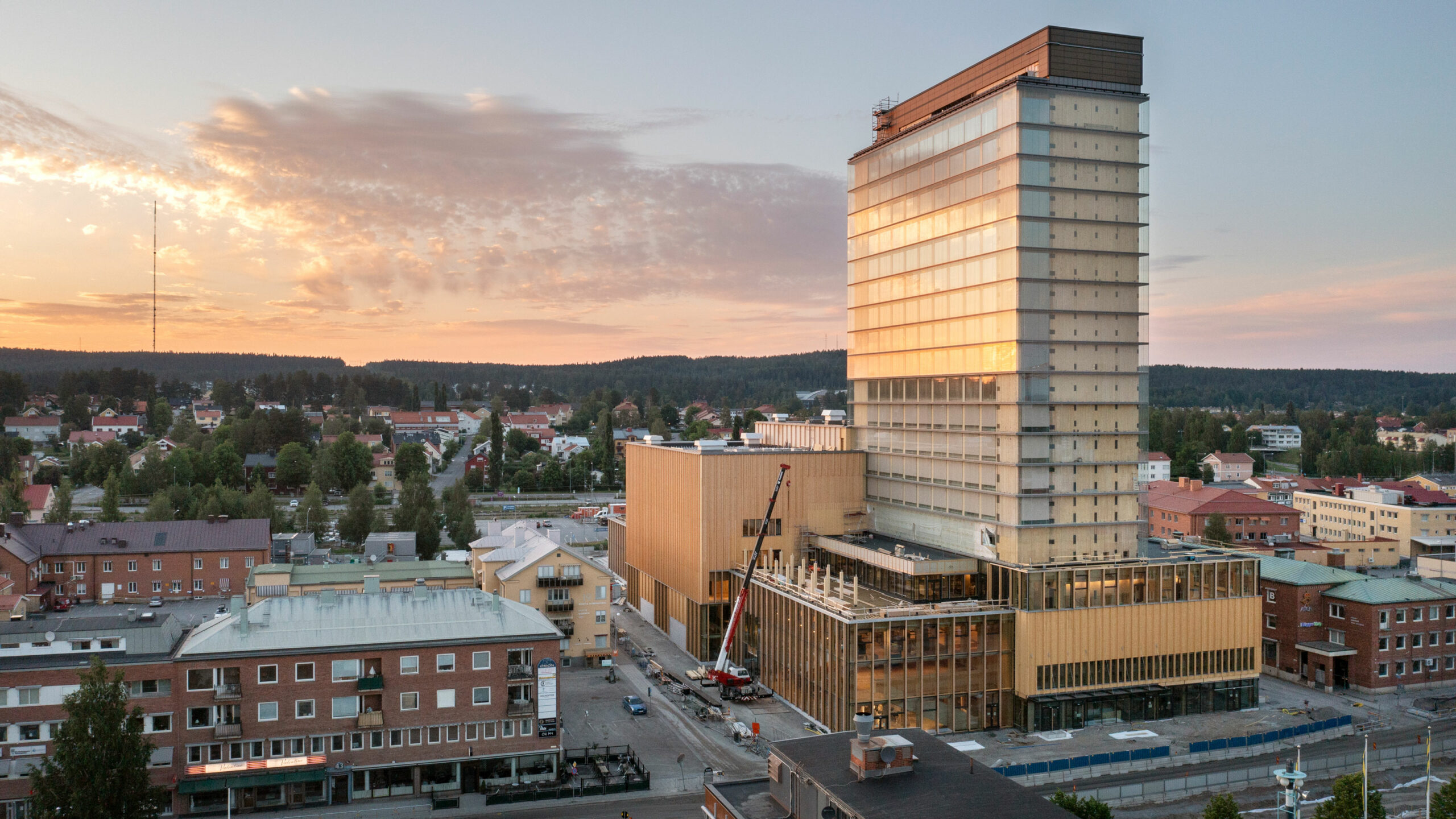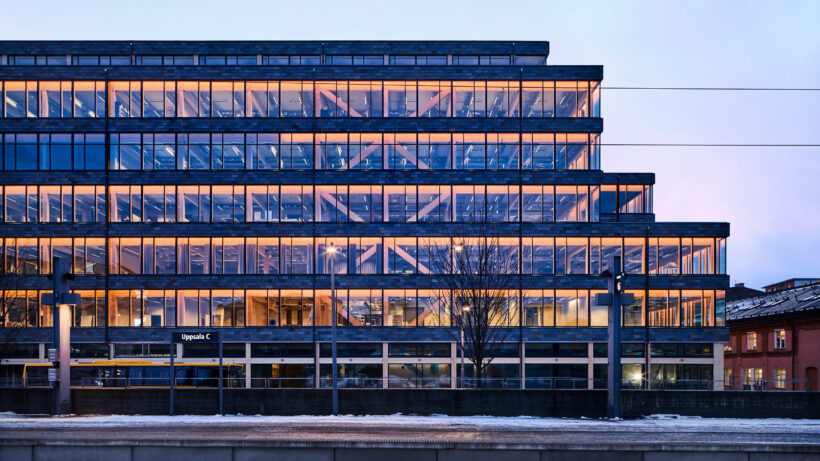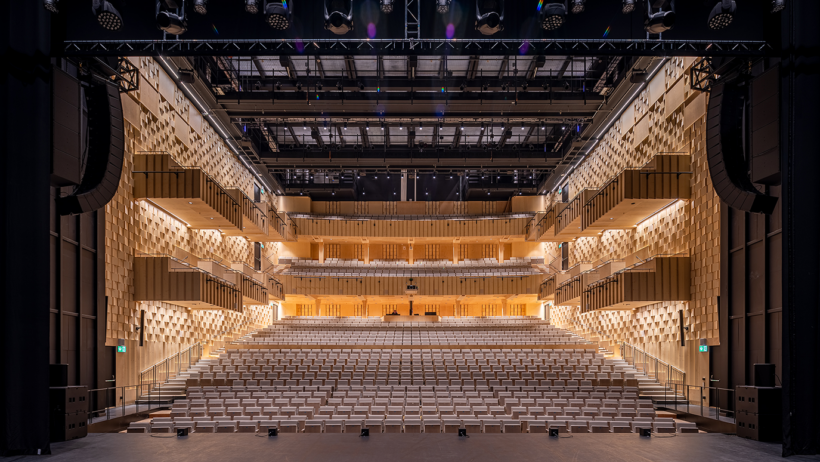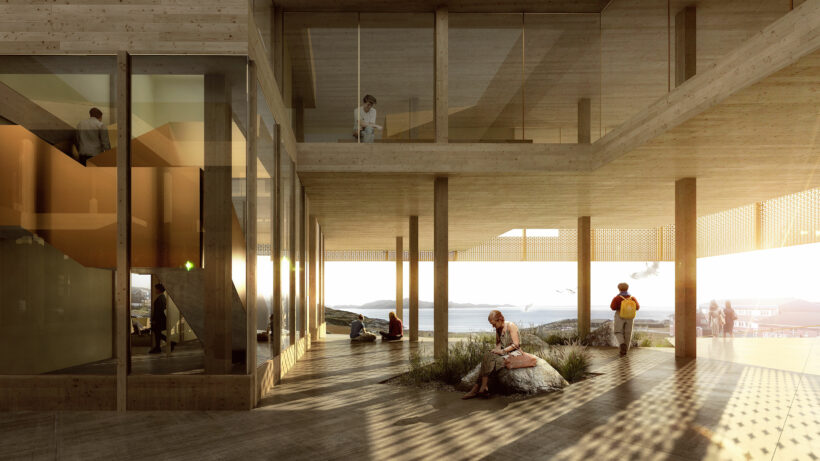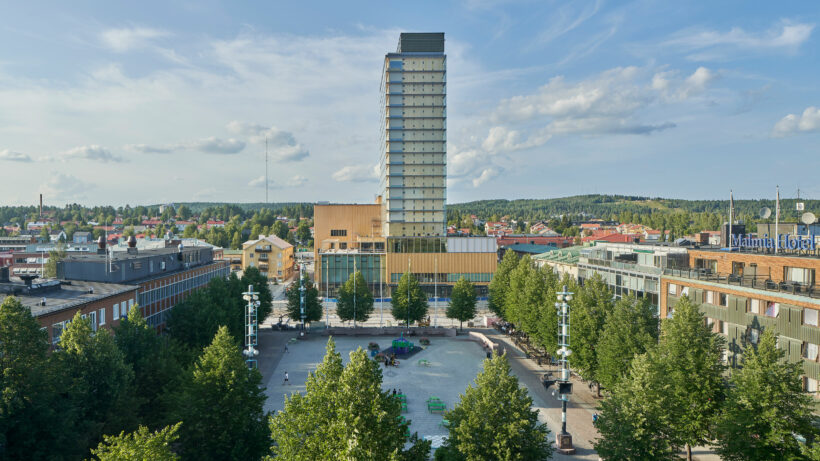Replacing the concrete frame with a wooden one is a way to drastically reduce a building’s carbon footprint at virtually the same cost. Something more and more people are starting to take notice of. Last year, 33% of White’s projects had timber frames, up from 21% the year before.
Anders Tväråna is the lead architect for one of them: Magasin X in Uppsala – Sweden’s largest wooden office building.
– By choosing a wooden shell, we have managed to cut carbon emissions by about half compared to concrete, says Anders Tväråna, Lead Architect.
Of course, even large-scale construction with a wooden frame has an environmental impact. But it consists largely of the concrete still used in the ground and basement. In Magasin X, the elevator shaft and stairwell are also made entirely of wood. It also uses several innovative sustainability solutions such as local electricity generation with a battery bank and geo-energy to regulate indoor temperatures.
